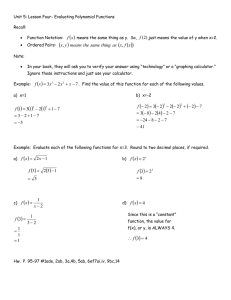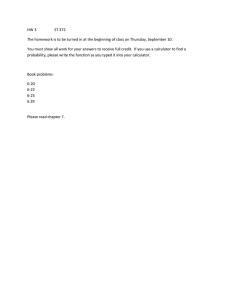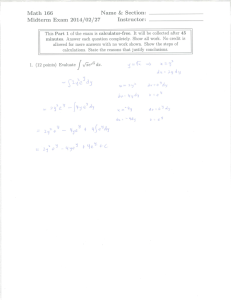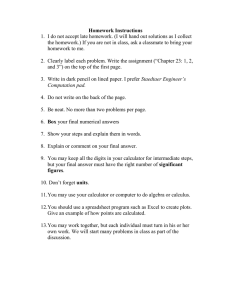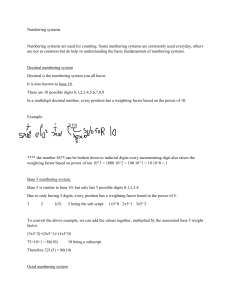Using Q A to Enhance Learning by Nazaret Dermendjian
advertisement
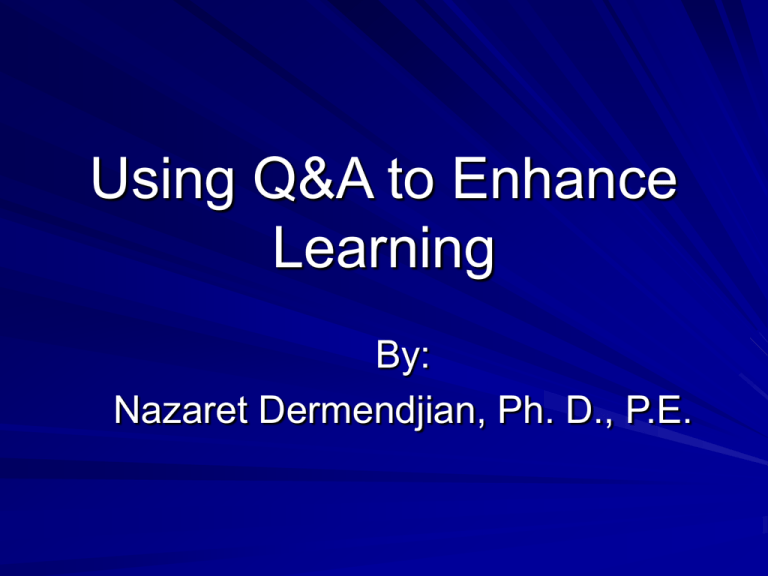
Using Q&A to Enhance Learning By: Nazaret Dermendjian, Ph. D., P.E. Study of Polynomials 1. Traditional Approach 2. Solve Problems with values for a and b Disadvantages Very repetitious Student has no clue how and where to use Objective not well defined ( what are the applications) Not inductive Will forget after the final Q&A Approach Question: what is 7.52 ? The standard answer by the student is: “I do not have my calculator with me” Follow up question: “Do you need a calculator to perform this?” Q&A Approach Question: What is 7x8? Answer 56. Now, let’s review (a+b)2 …. (a+b)2 = a2 + 2ab +b2 Q&A Approach What if b is 1/2 (a+ ½ )2 = a2 + 2a( ½ ) +( ½ )2 = a2 + a +1/4 = a(a+1) +1/4 Now, 7.52 = (7 + ½ )2 = 7x8 +1/4 = 56.25 Do you still need a calculator? Q&A Approach Questions: what are: 3.52 4.52 5.52 9.52 Q&A Approach How can we use (a-b)(a+b) in the same manner? Let’s do 7.5 X 8.5 Remember (a - b)(a +b) = a2 -b2 Q&A Approach Note: 7.5 x 8.5 = (8 - 0.5)(8 + 0.5) = 82 - 0.52 = 64 - 0.25 = 63.75 What is 7.5 X 9.5? Q&A Approach 7.5 x 9.5 = (8.5 – 1)(8.5 + 1) = 8.52 – 12 Now, 8.52 = 8 x 9 +1/4 = 72.25 and therefore, 7.5 x 9.5 = 71.25 Advantages Applications are well defined Unique approach Students will remember (they will be impressing their friends) No sleeping in class and lecture time (more questions are asked to students that have the sleepy eyes) It is fun and you have their attention Thank you! Any Questions?

